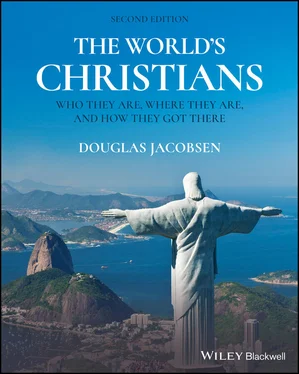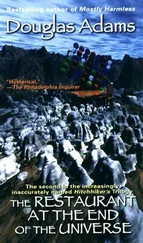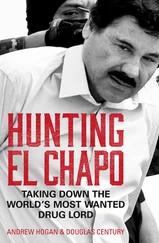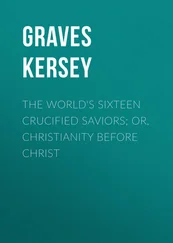Table 3.1 Five main “families” of Protestantism, representing two thirds of all Protestants worldwide
© John Wiley & Sons, Inc.
| Family name |
Global organization (year founded) |
Number of denominations represented |
Number of countries represented |
Number of global adherents |
| Anglican |
Anglican Communion (1931) |
46 |
165 |
85,000,000 |
| Baptist |
Baptist World Alliance (1905) |
239 |
125 |
50,000,000 |
| Lutheran |
Lutheran World Federation (1947) |
148 |
89 |
75,000,000 |
| Methodist |
World Methodist Council (1881) |
80 |
138 |
80,000,000 |
| Reformed |
World Alliance of Reformed Churches (1970) |
218 |
100 |
75,000,000 |
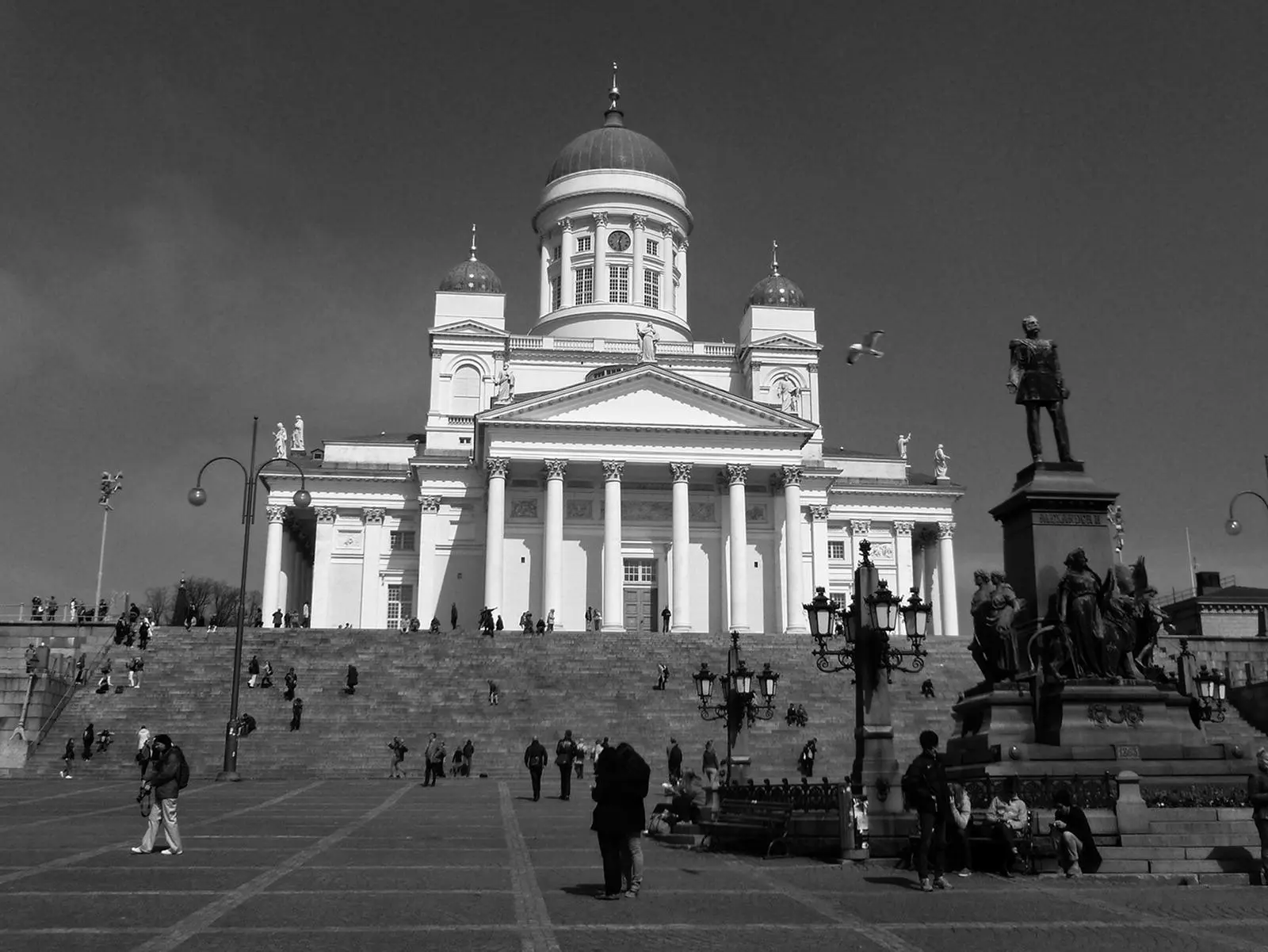
Figure 3.3 The Evangelical Lutheran Cathedral, located on the Senate Square (Helsinki, Finland), illustrates the continuing prominence of the state church in Finnish society.
Photo by author.
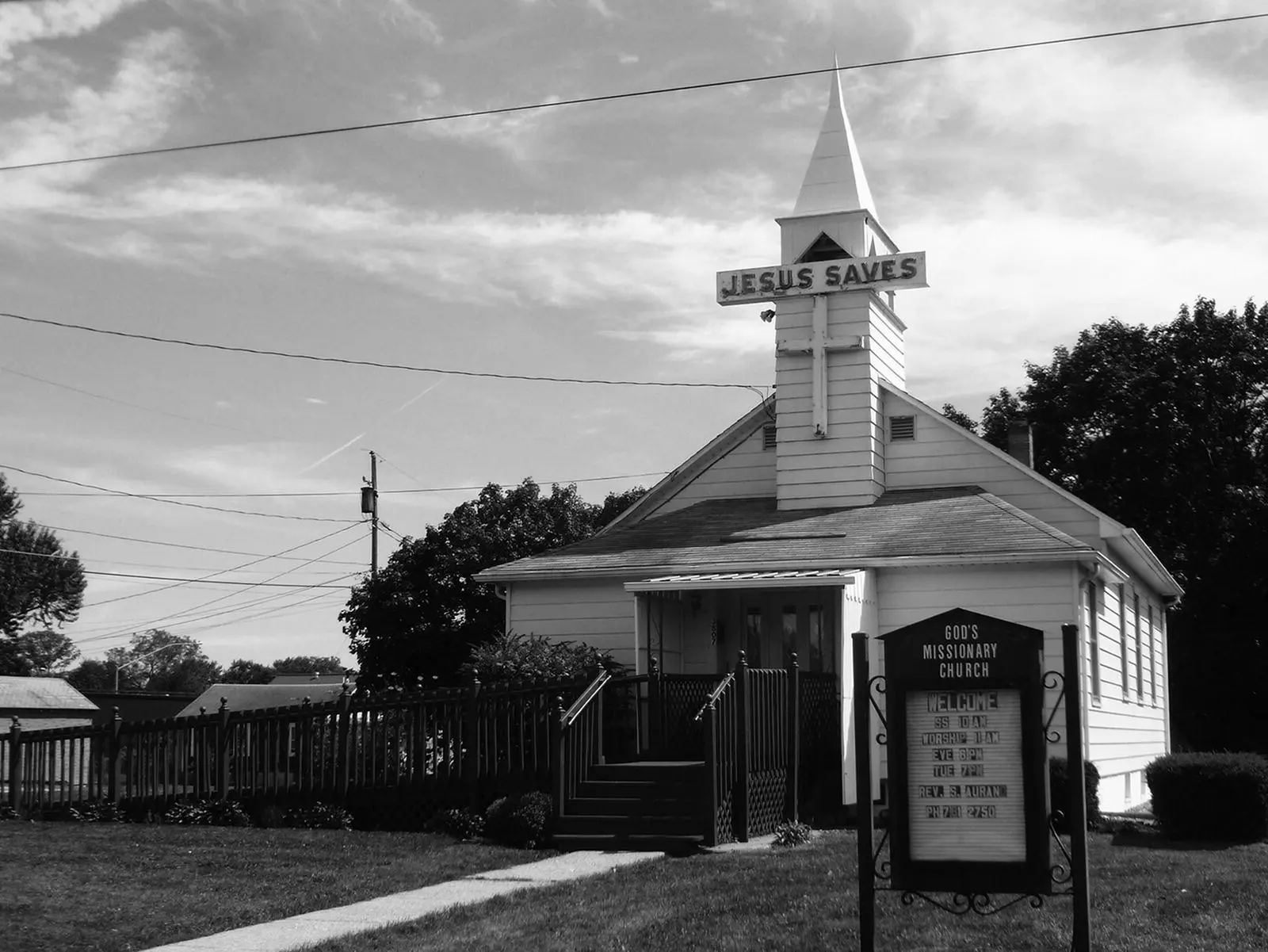
Figure 3.4 God’s Missionary Church (Camp Hill, Pennsylvania). About a third of the Protestant churches in the United States are this size or smaller.
Photo by author.
In the United States a very different kind of Protestantism emerged. No single church enjoyed monopoly status in any of the North American British colonies. The New England colonies tried to reproduce something like the church state model, hoping that Puritan ideas and values would saturate the region. But after the American Revolution (1776), none of the former colonies called for a specific church to be placed in charge of all the others, and everyone wanted freedom for their own church to continue to exist. The solution was church–state separation, with every church maintaining itself through voluntary membership and support.
In this new North American context, different kinds of Protestants stopped thinking of each other as heretics or dissenters and started treating each other simultaneously as colleagues and competitors. There was a great deal of agreement among the American churches regarding public standards and values, which meant there was lots of room for cooperation and joint action. But there was also a limited population, which meant that various organized church groups (Anglican, Baptists, Congregationalists, Lutherans, Methodists, Presbyterians, and others) found it necessary to compete for members and money. This new North American social structure of Protestantism eventually came to be called “denominationalism” and different Protestant church bodies became “denominations.” In the freewheeling, cooperative but competitive religious context of North America, some churches have seen large size as a competitive advantage, leading in recent years to the burgeoning of megachurches (congregations with more than 2,000 members), while other churches have touted their smallness as a sign of spiritual strength and vigor (see Figure 3.4). As Protestantism has spread around the world during the last two centuries, it is this freewheeling, cooperative but competitive, denominational style of Protestantism that has come to dominate the movement rather than the state church model of Protestantism that still exists in Europe.
Protestantism has been in existence for only five hundred years, but those five centuries have been tumultuous. In the following account, Protestant history is divided into four periods that reflect the movement’s changing identity and geographic expansion. The first section focuses on the movement’s European origins (1500–1650). This is followed by sections on the internal diversification of Protestantism (1650–1800), Protestantism’s global expansion (1800–1950), and Protestantism’s contemporary connections and divisions (1950 to the present).
Protestant origins (1500–1650)
The Protestant movement burst on the scene in the early 1500s and gave European Christians a new religious alternative to Catholicism. Protestantism was warmly welcomed in many parts of Northern Europe, and it soon spread from Germany to Scandinavia, England, Switzerland, France, and Poland. In Germany, Martin Luther (1483–1546) was the main promoter of the new movement, and the Lutheran tradition codifies his thinking. A generation later, John Calvin (1509–64) led the way in articulating a slightly different Protestant vision, the Reformed perspective, which he summarized in his theological masterpiece, the Institutes of the Christian Religion . Another more radical expression of Protestantism, known as Anabaptism, emerged during these years in Switzerland, Germany, and the Low Countries. Anabaptists (meaning “re‐baptizers”) would only baptize adults (not infants), and they were pacifists who would not serve as soldiers. The Mennonites founded by Menno Simons (1496–1561) became the largest Anabaptist group. Meanwhile, in England, the Church of England was slowly evolving from its status as an independent Catholic Church governed by King Henry VIII (monarch from 1509 to 1547) toward becoming a solidly Protestant church under Queen Elizabeth (who ruled from 1558 to 1603).
The Catholic Church, which was accustomed to having a religious monopoly in most of Europe, responded vigorously to the various Protestant challenges. Catholic rulers across the continent felt compelled to defend the one, true, Catholic faith, and eventually almost all of Europe was embroiled in a tangle of religious violence that continued for more than a century. At times, Protestant armies clashed with Catholic armies, but sometimes different kinds of Protestants fought each other, and the pacifistic Anabaptists were persecuted by almost everyone. After a century of fighting, Europe’s Christians were religiously exhausted, and the violence slowly abated. The political solution, known as the “Peace of Westphalia” (1648), allowed each local kingdom, duchy, principality, or nation to choose its own religion – either Catholicism or some form of Protestantism – but each state was supposed to be religiously homogeneous. Long before 1650, Lutheranism had become the state‐designated religion in Scandinavia, the Church of England (Anglicanism) had become the official faith of England and Wales, and Reformed (or Presbyterian) Protestantism had become the dominant religion in Scotland and in various parts of what is now Germany, Switzerland, and Hungary.
The years 1650 to 1800 were a time of both consolidation and creativity for the Protestant movement. By 1650, most of the Protestant state churches of Northern Europe had settled into a form of faith called confessionalism , a theologically defined, church‐centered, usually regionally based form of Protestantism that stressed correct doctrine and the proper worship of God. Not much emphasis was placed on religious experience or on the need to rethink religious beliefs in the light of emerging knowledge, and confessional Protestants felt little or no compulsion to communicate their vision of Christian faith to people living outside the borders of their own nations. While this form of Protestantism was acceptable to many people, it was stifling to some.
In the seventeenth century, Pietism developed as an alternative to confessionalism. The Pietist movement began in Germany, under the leadership of the Lutheran minister Philip Jakob Spener, and quickly spread elsewhere. Pietism stressed the personal and experiential aspects of Protestantism, including dedication in prayer, careful study of the Bible, moral self‐discipline, and compassionate service to the needy. For the most part, pietistic Protestants were content to practice their emotion‐enhanced faith under the umbrella of the European state churches, though some pietistic groups built small chapels or meeting houses where they could gather during the week for study and prayer. The most prominent exception to this rule was Methodism, a pietistic movement within the Anglican Church that eventually broke away from the Church of England and became a new denomination. Almost all the various forms of Protestant Pietism emphasized the importance of sharing one’s faith with others, and in the late 1700s and early 1800s this concern led Pietists to launch the first foreign Protestant missions.
Читать дальше
